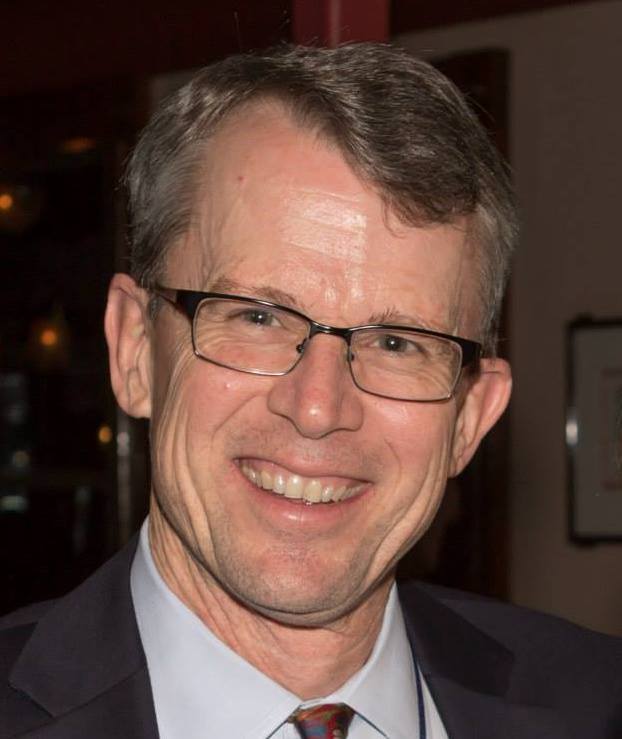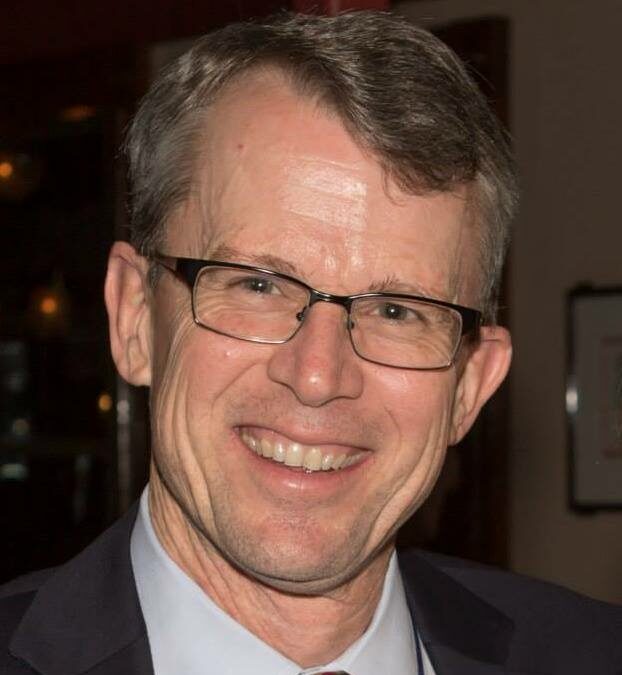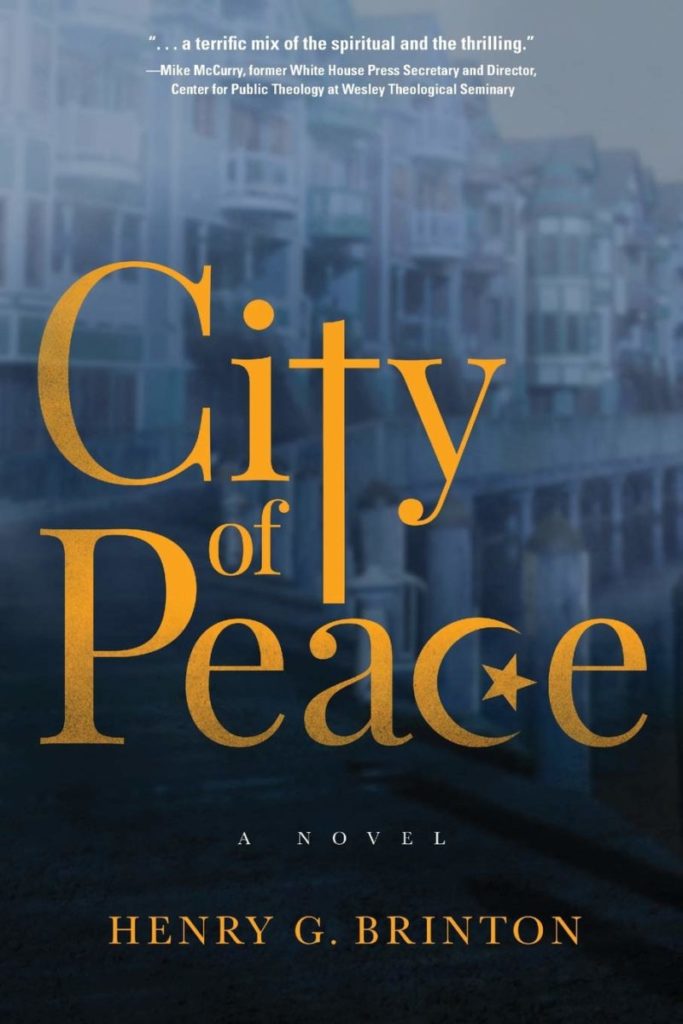
Henry G. Brinton is an author and a Presbyterian pastor who has written on religion and culture for The New York Times, The Washington Post, USA Today, and Huffington Post. A frequent speaker at workshops and conferences, he is the author or co-author of five books including The Welcoming Congregation: Roots and Fruits of Christian Hospitality. His interfaith work and appreciation for the wisdom of the ancient world began on an archaeological dig in the Galilee region of Israel.
What inspired you to write this story now?
I am deeply troubled by the polarization of life in America today, with politicians and citizens of red states and blue states spewing vitriol at each other and showing little interest in finding common ground.
At the same time, I see my fellow citizens embroiled in immigration debates, struggling with life among diverse cultures and faiths, and facing the threat of global terrorism. If there is any hope for building bridges across the divides of politics, culture and religion, I believe it will come through a new vision of our life together—the kind of vision that is better found in a story than a debate.
City of Peace is intended to be such a story—a gripping and fast-paced mystery that will engage people politically and spiritually, leaving them with fresh insight into how they can overcome polarizing divisions today.
Where did your inspiration for Harley come from?
There is a lot of my own heart in Harley Camden, a pastor who is trying to steer his church through the narrow passage between the religious right and the secular left, avoiding politics and preaching sermons that help people to follow Jesus and make a difference in the world. His efforts seem to be paying off, as church members hear his sermons and respond by doing what Jesus would do—feeding the hungry, sheltering the homeless, visiting prisoners, and welcoming strangers.
Then Harley loses his wife and daughter in a European terrorist attack, which I am happy to say is not based on my own life experience. He spirals downward in grief and anger until his bishop moves him to a small church in Occoquan, Virginia, to heal and to recover. I made Harley a Methodist because the story required him to have a bishop to move him. As a Presbyterian pastor I do not have a bishop, and I move only when called by a congregation.
Have you seen any meaningful results or made any meaningful connections based on your novel’s publication and message?
When I presented the book to a group of Turkish Muslims in Chantilly, Virginia, one young woman said that she felt I depicted the Muslim characters very accurately. I was pleased to hear this, since I did not want the Muslims in the story to be seen as two-dimensional characters. The church I serve, Fairfax Presbyterian, works closely with members of the neighboring Turkish mosque to serve our neighbors in need, especially feeding and sheltering the homeless on cold winter nights. We believe that interfaith cooperation is part of what makes for peace in our community and nation.
Ángel Cabrera, the president of George Mason University in Fairfax, said that the book brings to life “the complex dynamics of living in an extraordinarily diverse region and ultimately leaves us with the hope that diverse communities can be immensely enriching to all of us.” He also appreciated the fact that the book opens a window on the world of a working pastor, giving a perspective that is not often found in contemporary fiction.
One of my church members, Isaac Bumgardner, a Fairfax County math teacher, responded succinctly by writing, “If you want to read a fast-paced mystery novel, read this book. If you want to read a book with themes of redemption, grace, kindness, and overcoming adversities, read this book.”
What inspires you about Occoquan?
Occoquan is a historic town on the banks of the Occoquan River, founded in 1734 on the northern edge of Prince William County. Prior to the Civil War it was an abolitionist stronghold, out of step with most other Virginia jurisdictions. In fact, when Abraham Lincoln was the Republican candidate for president, he received only 55 votes from all of Prince William County. They all came from Occoquan.
This history intrigues me and inspires me. Today, the streets of Occoquan are filled with a diverse blend of people: Mixed race couples, Latinos, whites, blacks, Muslim women in headscarves. Such a mix of races and cultures can lead to conflict, but it also invites cooperation, especially if people can come together to face a common threat. City of Peace tells the story of Harley Camden and the people of Occoquan responding to both a mysterious death and the threat of attack by Islamic extremists, a situation that is fictional but not improbable. At many times throughout its history, including during the Civil War, the people of Occoquan faced violence and division.
What role does the Galilean city of Sepphoris play in the novel?
When I was an undergraduate, I had the opportunity to participate in an archaeological dig in the Galilee region of Israel. This led to a lifelong fascination with the religion and culture of this diverse region, described in the Bible as “Galilee of the Gentiles” (Matthew 4:15). In the time of Jesus, the region was filled with Jews and Romans. It later became home to Jews, Christians and Muslims, and it always experienced both conflict and opportunities for cooperation.
One city in particular, Sepphoris, was a Jewish city very close to Nazareth, the hometown of Jesus. The people of Sepphoris chose not to revolt against Rome in the first century, as many of their fellow Jews did. As a result, Sepphoris became a thriving center of Jewish life in the centuries that followed. In City of Peace, Harley is a veteran of an archaeological dig in Sepphoris, and he looks for secrets in the ancient city that can help us in our struggles today.
Can you describe a little about your writing process?
The writing of this novel has been a true labor of love, and the Town of Occoquan has been my muse throughout the process. The writing was done on my days off from my work as pastor of Fairfax Presbyterian Church, and my favorite place to write was a turret in a corner of my Victorian home, overlooking the ever-changing colors of the Occoquan River. When I needed a break, I left the house and walked the streets of the town, looking around and thinking about what the characters in the book would see and say and do—in Harley’s church, in the town hall, and in the post office.
There is always something going on in this small town of 1,000 residents, with people eating and drinking in restaurants, shopping in art galleries, and kayaking on the river. Even the flow of the river and the movements of its fish and birds carry a message of life, death, danger and constant change. I never fail to be inspired by what I see and hear, and my walks around town during the writing of the book always gave me new ideas about how to advance the story of Harley and his neighbors.
When Methodist minister Harley Camden loses his wife and daughter in a European terrorist attack, he spirals downward into grief and anger. The bishop forces him to move to a tiny church in small-town Occoquan, Virginia, to heal and recover. But all hope for serenity is quickly shattered by the mysterious murder of the daughter of the local Iraqi baker, followed by the threat of an attack by Islamic extremists. Harley tries to build bridges to his neighbors, including Muslims and Coptic Christians, and digs into the history of the ancient Galilean city of Sepphoris to find the secret to survival in a fractured and violent world. Past and present come together in surprising ways as Harley sets out to stop the violence and save his new flock. City of Peace is a gripping and fast-paced mystery that will engage people politically and spiritually, leaving them with fresh insight into how they can overcome polarizing divisions among people of differing cultures and faiths.


